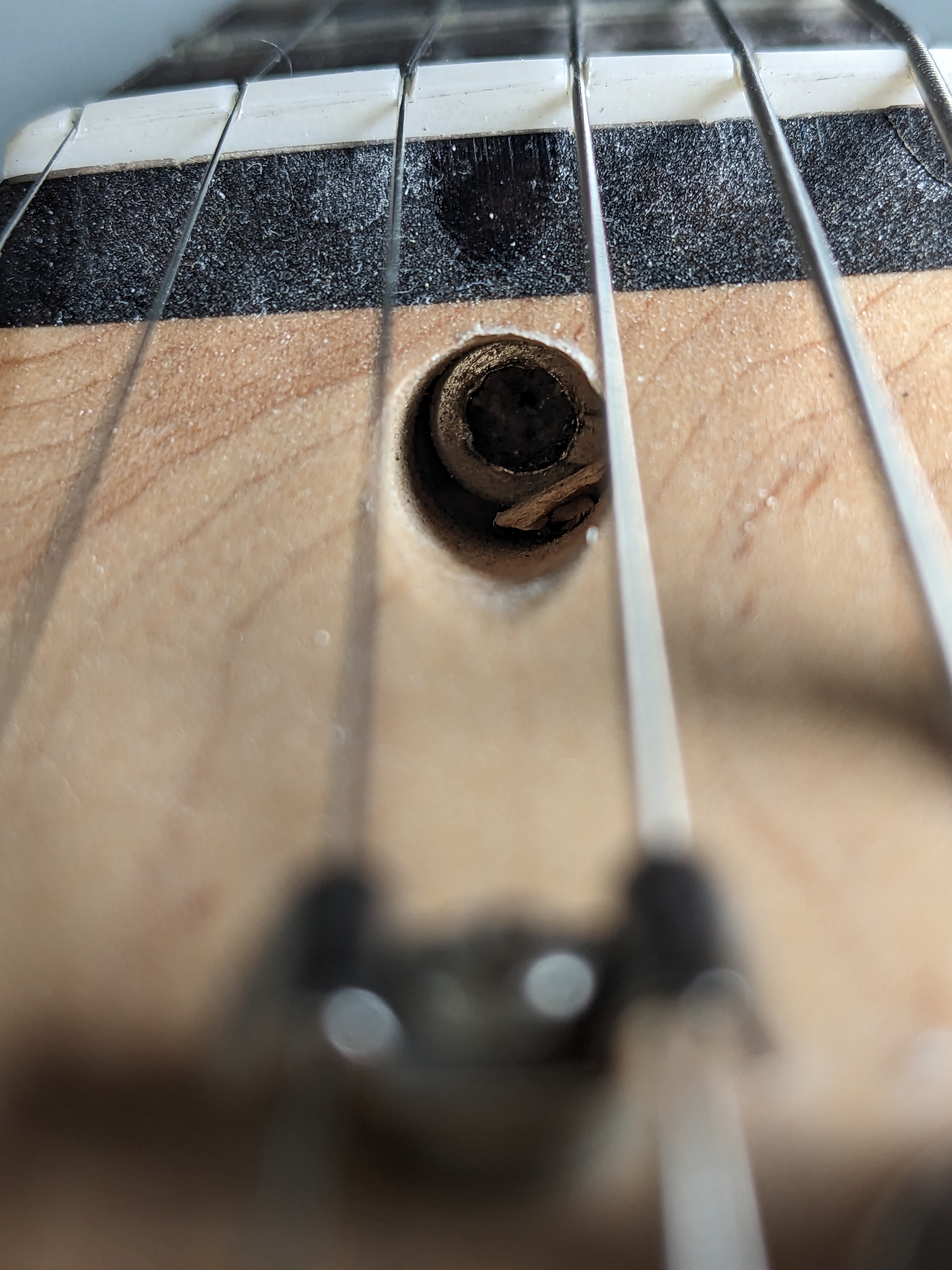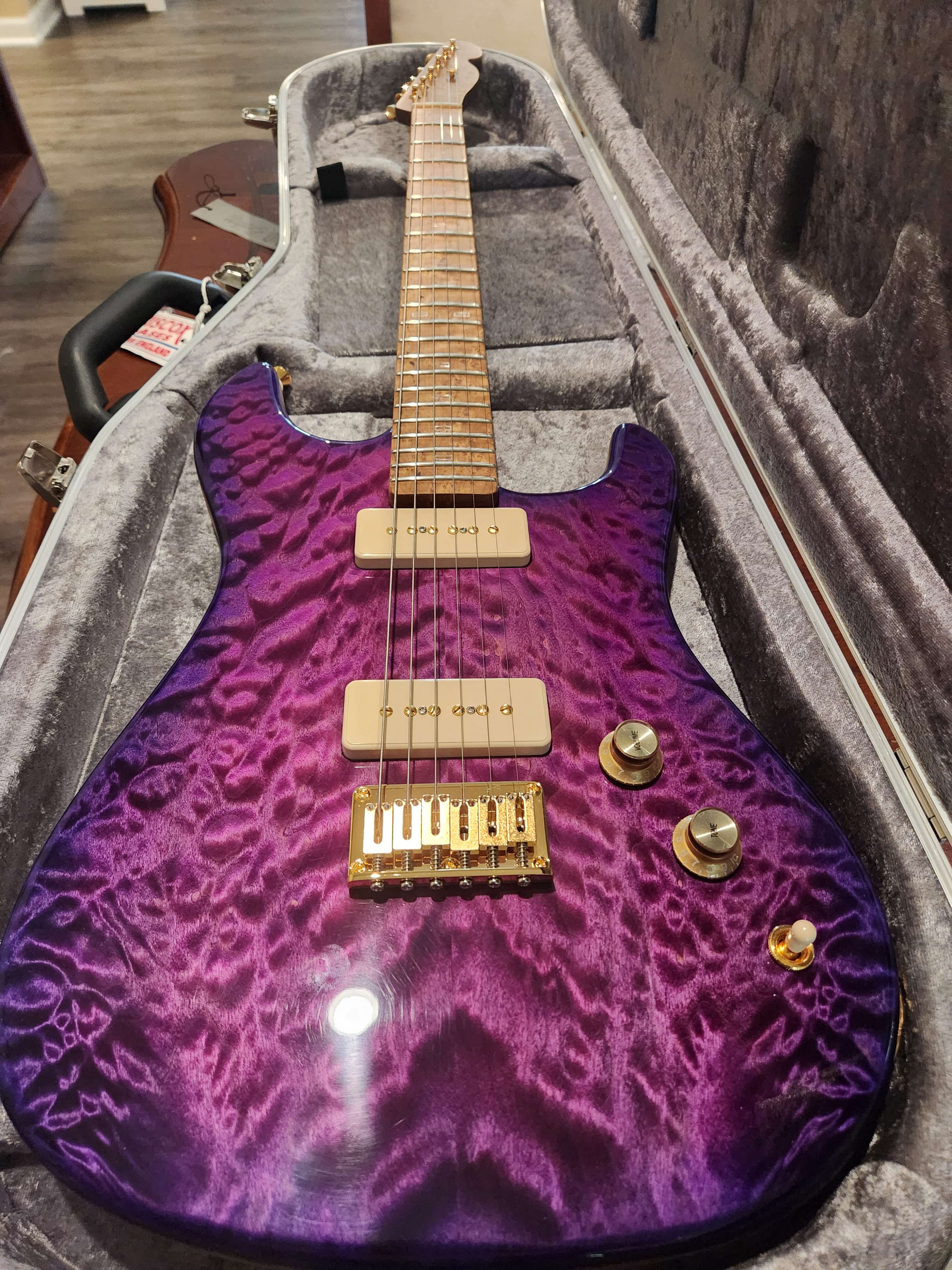Hello, I have some fret buzz on my first and second frets of my E and A strings. I am trying to fix this myself because I want to learn. I think this means I need to adjust the truss rod, right?
However, the bolt thing to my truss rod looks completely stripped:

I can’t really turn it.
Does that mean I need to make a new nut now if I want to get rid of this buzz?
Several things go into string setup and buzz
- truss rod
- fret leveling
- nut
- neck angle
- bridge height
If it’s a new problem, truss rod is probably the most likely to have changed recently (wood moves), followed by fret wear.
If this guitar has always done this, it could be anything in its setup. Depending on how bad it is, it could even be intentional, the low strings are more likely to buzz and some folks are ok with it on an electric in order to get lower action on all the strings.
It’s unlikely to be (only) your nut though - once you fret a string, the nut is removed from the equation, so it can’t be the source of 2nd fret buzz (edit: any fretted buzz).
If you want to fully diagnose it rather than guess& check, you’d want a long straight-edge to check the neck straightness, a short straight-edge to check for unlevel frets (you can get a specially designed one called a fret rocker), and any small thing like a credit card to ‘measure’ your string action height at various frets.
Fixing the truss rod is a good repair to do anyway*, though. Hope this helps!
This is a new problem, so I’m guessing I was on the right path looking at the truss rod. Was bummed to see the truss rod nut stripped. I just watched a video on using a fret rocker, I’ll check with that method and see if I have uneven frets.
It’s unlikely to be (only) your nut though - once you fret a string, the nut is removed from the equation, so it can’t be the source of 2nd fret buzz.
I do have buzzing on the open E and open A strings too, which is why I thought it could be something with the nut. You are completely correct about after I fret the 1st though.
This was very helpful, thank you!
Yeah you’ll need to replace the truss rod nut. Here’s a good guide.
I think you’re on the right path, the truss rod would indeed be where i’d start. Fret buzz at the first 1-2 frets is often indicative of a neck with a bit of back bow, so you’d want to introduce some relief. 1/4 turn at a time, then re-tune until the problem is gone. So i would look at some of the responses already posted on how to repair that.
A simple way to check is to use the strings as a straight edge. Fret a string at fret 1 and fret 15 simultaneously. That removes the bridge and nut from the equation, and gives you a perfect straight edge. Then check for a small gap between the string and fret 7. The size of that gap tells you how much relief the neck has. You can change it by adjusting the truss rod. Use very small adjustments (like 1/8 turn) and retune the strings before checking the relief again.
If you need to replace the truss rod nut, there are various techniques to remove the stripped one. Start by removing all string tension (this makes it easier to loosen). For a tool, you just need to find something that grabs enough to get it to turn. A slightly larger allen wrench, a blade screwdriver, a screw extractor, etc. Another option would be to find a bit of metal bar that fits in the socket and super glue it on. Then you can grab the bar with vice grip pliers and turn it.
A bolt extractor / easy-out will help you turn the truss rod. (Something like this, make sure you find the right size: amazon.com/CRAFTSMAN-CMMT14108-Spiral-Screw-Extractor/dp/B09NCZCRWL/ )
You don’t necessarily need to remove & replace the truss rod nut; you could just use the tool to help you turn & adjust it.
Also check using a straight edge to see if a fret is popping out. You can use a soft mallet to hammer it back in.



